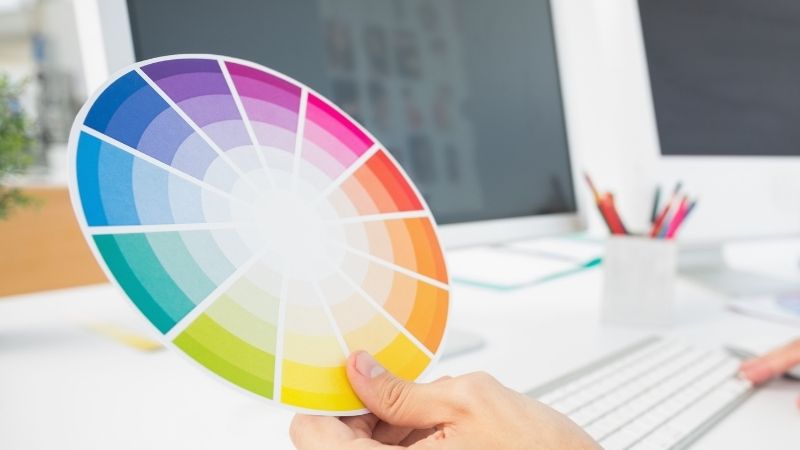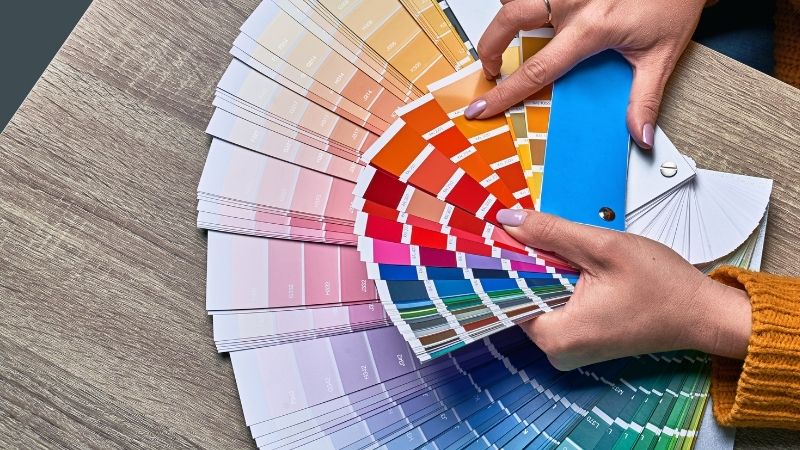What Is the Opposite Color of Blue?
A color is a powerful tool that can channel emotions, change the mood, command attention, symbolize and represent objects, and much more.
From the arts to architecture, film to fashion, and everything in between, the color blue makes waves.
Those who love blue may have noticed how this color often appears with other hues in order to make the other pop.
In order to fully grasp how this works, you need to understand what the opposite color of blue is.
By learning the opposite color of blue, you can better understand color theory and how to use complementary colors.
By extension, you can also channel wonderful color schemes that use blue and its opposite color well.
Learn more in this article.
Talking About the Color Wheel

As a child, you may have learned the basics of colors through the color wheel. The color wheel is your gateway to color theory.
The art and design fields use this tool regularly. Based on its name, the color wheel arranges hues in a circular pattern based on their chromatic relationship with one another.
The color wheel mainly consists of three categories, namely the primary, secondary, and tertiary colors.
You may know that the color blue is a primary color, alongside red and yellow. Meanwhile, the secondary colors include green, orange, and purple.
These secondary hues come from combining any two of the primary colors.
To achieve tertiary colors, mix one primary and one secondary color. The tertiary colors include yellow-orange, red-orange, yellow-green, blue-green, blue-violet, and red-violet.
In total, there are 12 main colors on the color wheel.
What Is the Opposite Color of Blue?

From discussing the color wheel, you may already have an inkling of what the opposite color of blue is. But before we reveal the answer, let’s tackle a bit about complementary colors.
Complementary colors, otherwise known as opposite colors, are simply colors that lie on the other side of the color wheel.
You will find primary colors sitting opposite secondary colors. And you can find one tertiary color on the opposite side from another tertiary hue.
Complementary colors get their name because they enhance the intensity and vibrancy of each other when placed together. As a matter of fact, placed right next to each other, they create a strong contrast.

In the traditional red, yellow, and blue (RYB) color model, the color opposite of blue is orange. The thing with complementary colors is they make each other pop.
If you notice, one is a cool hue and one is a warm hue. In this example, blue is a cool color, while its opposite color, orange, fall under the warm category.
When you place these two next to each other, they create a natural illusion called simultaneous contrast. When this happens, the combination naturally grabs attention.

You can see this when making a sunset with varying hues of orange set against the deep blues of the sea or of the sky.
Psychology Behind the Color Orange

As mentioned, orange is a warm color. As such, it provides a sense of comfort while also giving out energizing feelings.
Bold and vibrant in every sense of the word, orange is an attention-grabbing hue. Therefore, it is effective in various forms of media and advertising campaigns to catch people’s attention.
Orange holds associations with uplifting feelings and emotions. It is even linked to notions of brightness and happiness.
In many ways, it almost seems to combine the best of what red and yellow can bring. Red, after all, evokes physical energy and stimulation, while yellow gives off radiating brightness and cheerfulness.
Where We See the Color Orange

The color orange is just about everywhere we look. In fact, this hue is prominent in nature.
Considered an autumnal hue, orange is a reminder of this transition and the warm and vibrant hues that come with this change of seasons.
From the leaves changing in color and Halloween pumpkins, orange is very much present during this time.
On the other hand, in terms of religion and spirituality, orange represents change, purity, and fire.
Many Hindu and Buddhist monks wear orange robes to symbolize turning over a new leaf and letting go of the material world.
The Bottom Line
Now that you know the opposite color of blue is orange, you have a better understanding of what this color represents.
At the same time, you also know how to best work with and incorporate this hue in a variety of settings.
Read Latest Posts

Hi, I'm Anthony Tran! Welcome to my site. I live in Arizona and am obsessed with all things related to building an Online Business and working from home. Learn about my journey here.
Follow Online


